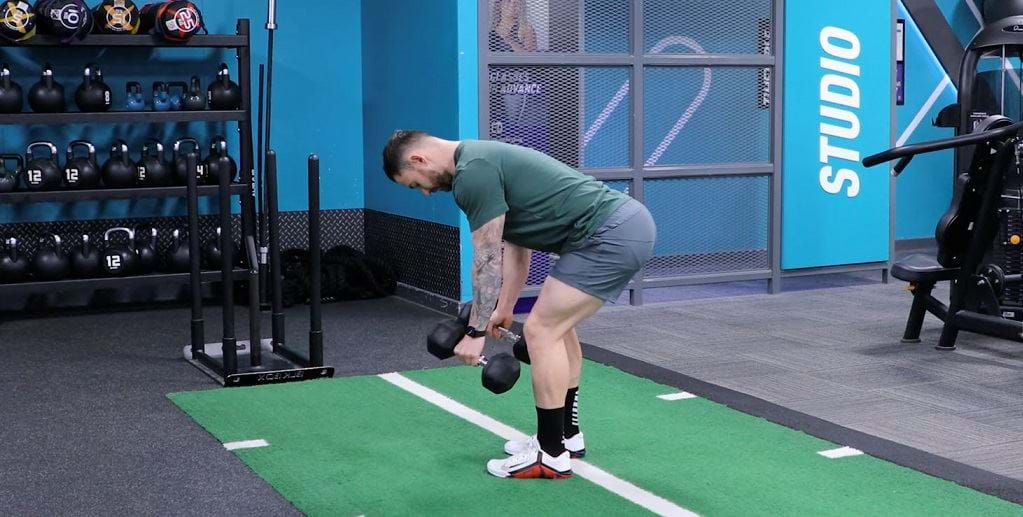Dumbbell Bent Over Rows
What Is A Dumbbell Bent Over Row?

The dumbbell bent over row is a variation of the bent over row that uses dumbbells rather than a barbell. The dumbbell bent over row can be loaded with lighter weights and is a great way for beginners to become familiar with the movement and build strength, while reducing risk of injury. This exercise targets the latissimus dorsi, rhomboids, trapezius, and rear deltoids, with further engagement from the lower back, biceps, core, glutes, and hamstrings.
Dumbbell rows are a unilateral movement and load each side separately, helping to identify and improve muscular imbalances for an overall improvement in strength and minimised risk. This version commonly uses a neutral grip which may also feel more comfortable on the shoulders than pronated or supinated grips that are forced with the barbell bent over row. If you would rather alter the grip, a supinated (underhand) grip engages the biceps further, while the pronated (overhand) grip will have greater focus on the lats.
Check out some other row variations: single arm dumbbell row, incline row, seated cable row, inverted row, TRX row
Commonly Asked Questions On Dumbbell Bent Over Row
Dumbbell bent over rows do work the shoulders, but the posterior (rear) deltoids are more engaged than the anterior (front) deltoids as it is a pulling movement. If you are looking to build your anterior delts, overhead pressing and incline bench press can be good exercises to include in your workouts.
There is no need to rotate the dumbbells when doing a dumbbell bent over row – maintaining correct form and engaging the muscles is more important. Instead, choose a hand position and maintain this throughout. An underhand grip engages the biceps more, while an overhand grip emphasises the lats more.
Bent over rows are an excellent compound exercise that engages nearly all the posterior chain. Dumbbell bent over rows can be a great way to learn this movement, build back strength, and iron out muscular imbalances. You may choose to progress to barbell rows as you get stronger as you will be able to load more weight.
When performing bent over dumbbell rows, your torso and thighs should be at a 45-degree angle to each other.
Dumbbell Bent Over Row Tips
It is important to use proper form to protect the lower back and ensure the intended muscle groups are worked in the dumbbell bent over row. We recommend mastering a hip hinge with just bodyweight first: the movement should come from the hips, with most of the weight felt in the hamstrings and glutes rather than lower back.
Maintaining this position throughout the whole exercise will help to protect your lower back from injury. If your glutes or hamstrings become fatigued before your back muscles, try switching to chest supported rows. These remove demand on the lower body, isolating the back muscles ensuring they are challenged sufficiently.
How To Do A Dumbbell Bent Over Row
Choose your dumbbells and grip. A neutral grip (palms facing each other) can be easier on the shoulders, supinated (underhand) works the biceps more, and pronated (overhand) engages the lats more.
Maintaining a neutral spine, hinge forward by pushing your hips back until your torso is at a 45-degree angle. Your arms should be extended with the dumbbells to the front of your shins.
Take a deep breath in, brace your core, and row the dumbbells towards your hips by pulling your elbows back in an arc direction until your elbows are bent and your triceps are parallel with the floor.
Return the dumbbells to the starting position by slowly allowing your arms to extend in front of you.
Once the set is complete, push your hips forwards to stand tall before deadlifting the dumbbells back onto the floor.
If you’re not sure if any of the above exercises are suitable for you, please consult your doctor before you start it. Need guidance on how to perform the exercise? Ask a personal trainer at your gym.